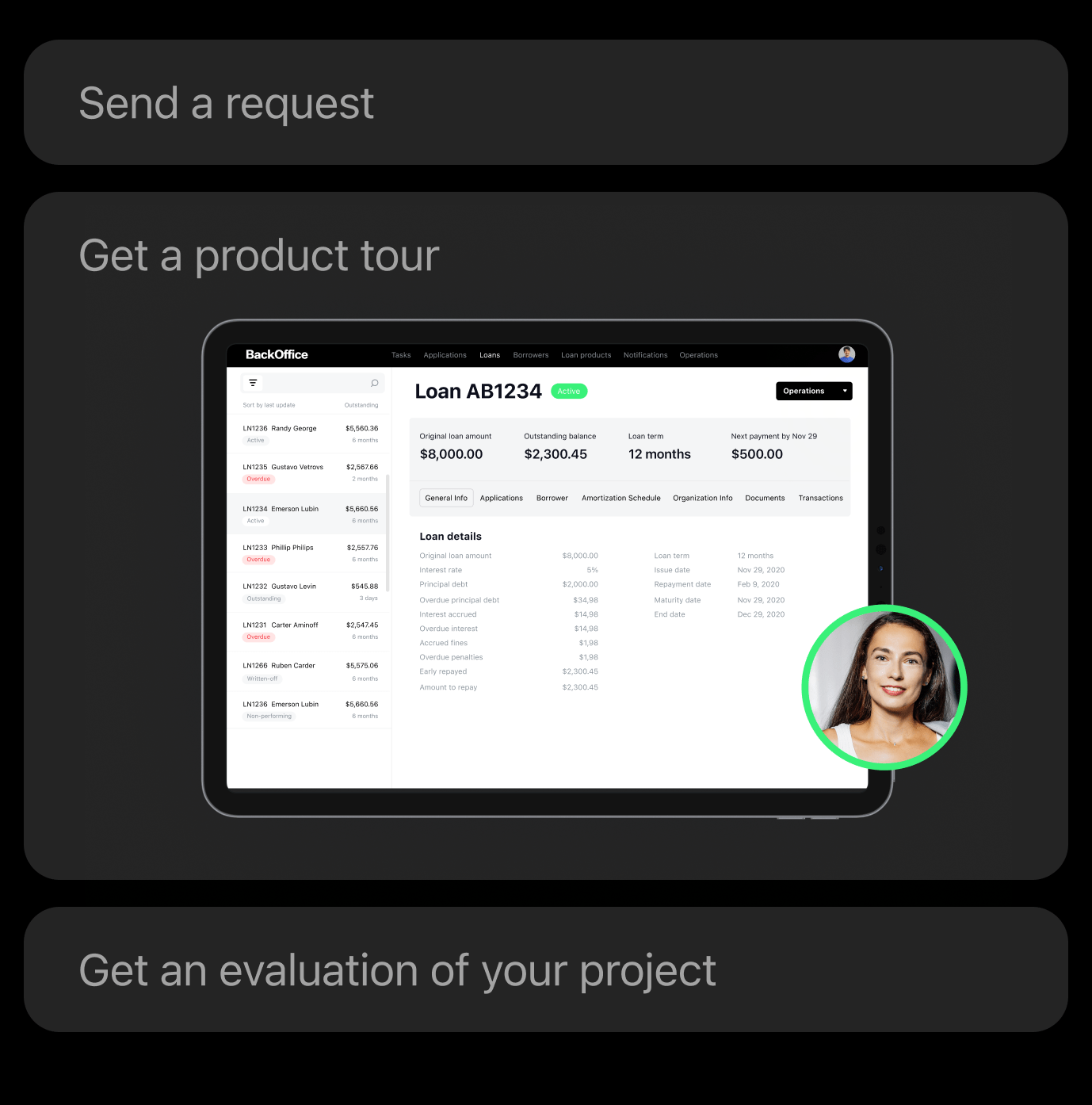Maria Nemogai and Tanya Hancharuk are a vital part of the Business Development department at HES FinTech. In this interview, they will discuss the current situation in the lending market, talk about clients, and share their vision on where the market is heading right now.
There is an opinion that out-of-the-box solutions do not support the growth of a lending business in the long term. Do you agree with this statement?
Maria: I dare say – yes.
For the majority of countries around the world, lending business is not something unusual. Even in developing countries, there are lots of alternative lenders coming to get their piece of the pie. So if you’re not a monopoly, you cannot just continue getting clients by the fact of your mere existence.
You have to be different, flexible, and ready for different situations – like this one we experience right now with the COVID-19 pandemic. I guess ‘out-of-the-box’ solutions are a great fit for some companies to test the ground. But those who want to, so to speak, successfully test the Lunar or even Martian surface, they go and build very specific tools for that. They go from Zero to One, as Peter Thiel said.
Tanya: I agree. Lenders should be unique and have an edge to compete with other lenders. It’s all about the ability to make quick adjustments to meet borrowers’ requirements and, what is more important, comply with the requirements of the Central bank or any other authority.
To cite just the most recent example, many countries all over the globe were quarantined next to no time, and governments imposed restrictions on lenders to support people. Lenders who lacked the capacity in changing their credit products quickly had to stop loan issues for days or even weeks. In the meantime, we helped our customers to meet demands and proceed with restructuring and new credit products within a few hours.
How fast is it possible to launch an online platform for MFIs?
Maria: 2-3 months. Sure, we had cases when we launched in 4-6 weeks, but that’s literally building the airplane on the fly. Remember, we talk about solutions that work with money – it takes precision, caution, and testing to get the job done. And it involves a few more parts, to say the least: acquiring the financial license, going through compliance, setting up even a minimal team, going through marketing activities, signing with 3rd party integration providers that are of essence for the business. It all takes time.
Tanya: We usually say that it takes from 2 to 4 months. It mostly depends on the market, the number of integrations, and the complexity of credit products.
Within the lending community, there’s a lot of speculation on integration problems with third-party services (SMS services, accounting software, integrations with credit unions, etc.). What does HES FinTech offer in this regard?
Maria: The fear of integrations is sometimes exaggerated. But if you did anything in your life for at least a couple of times, you already understand the drill. Same with integrations, we have over 400 integrations under our hood. And we still don’t cover them all globally – many more exist in the market, and many more will pop out with every new successful payment startup, digital behavior initiative, etc.
In the vast majority of cases, we need a week or two to get connected with the Credit Bureau or a payment gateway. Sometimes, even less – with notification providers. And by the way – the newer is the player, the better is technology and drive. So we love new integrations.

What peculiarities of a fintech project’s launch exist in the Western and Eastern markets respectively?
Tanya: We have clients both in Western (Canada, the USA, the UK, and Spain) and Eastern (Vietnam, Sri Lanka, the Philippines) markets. I won’t say that the difference is huge, however, there are some peculiarities in credit products and interaction with 3rd parties. In the Western market, SME lending and various types of marketplaces are booming at the moment. At the same time, consumer and micro-lending are prevailing in developing countries. Also, the technical level of 3rd parties (credit bureaus, KYC & AML services) is different. For instance, companies in the South Eastern region told us that they did have an API to proceed with integrations but in fact, they didn’t. Western companies still use outdated external systems like accounting software. Sometimes lenders still resort to these systems, but the integration itself is either impossible or could take months for implementation.
What are their most common inquiries/questions?
Tanya: Here are the most popular questions.
Could your software be hosted on-premises or in a cloud?
The answer is yes, it could be hosted either in a cloud or on-premises.
Do you have any limits on the number of credit products, users, and roles?
No, we don’t. I really like the expression “There are no penalties for your growth”. At HES Fintech, we adhere to this statement.
What is the average time-to-market?
It usually takes 3-4 months to launch the project and issue the first loan.
Do I have the ability to get access to the source code and proceed with the development with my own team?
There is no vendor lock-in, as we do have 2 types of lifetime licenses: with or without access to the source code. What is really important, our clients could upgrade a license without access at any time, i. e. after half a year, 3 years or whatever time they need.
Sometimes banks as bulky organisms do not keep enough pace with digitalization. How can HES FinTech help?
Tanya: If you had asked me this question 2-3 years ago, I would have said that the majority of banks are sluggish, and it might take years to get their attention and encourage them to proceed with digitalization. But nowadays the situation has changed. Banks have to go digital to compete with alternative lenders. They have to use top-notch technologies like AI, and this is what we do for banks at HES FinTech.
Maria: We can help fast. A bold thing to say, right? A bank needs a light-weight middleware between a core banking solution and a new line of business to try and to try fast. And this is what HES FinTech can do. Banks usually have all the resources to repeat and surpass the success of any new idea that gets into the fintech market. Yet we often see that it takes quite some time to launch that new line of business and get the share of the pie that is rightfully theirs.
We were challenged once to launch the bank leasing for consumers in just 6 weeks. Imagine what you can get in, say, 3-4 months? And that’s our general time-to-market.
Why does HES FinTech keep investing time and effort in AI? What benefits does GiniMachine bring to banks and fintechs?
Tanya: We keep up with the times and implement the most recent technologies in both our solutions, HES Lending Platform and GiniMachine AI scoring. GiniMachine works solely with historical data, builds scoring models within seconds, and automatically creates a so-called “Model evaluation report” that provides a thorough analysis. Hence, we help banks and fintechs to reduce their time-to-yes and the number of non-performing loans. For instance, when GiniMachine is used for churn rate analysis, based on customer activity. As a result, banks and alternative lenders could analyze possible churn and act before it happens, as well as identify key factors leading to customer attrition.

Maria: We see AI as an inevitable path of this century. With so much data that every business has, it’s a great idea, that was always on the surface – to use this data in order to help customers and businesses to succeed.
Any historical data of the business contains the signal, – or interdependencies, – and in this very data you can find many answers on forecasting, delinquency, churn, propensity. You just need to ask the right questions. And with GiniMachine it’s as easy as never before: you just load raw historical data with outcomes – and voila! – GiniMachine answers with the probability of certain outcomes and gives valuable insights on your data and threshold selection process.
Your business trip schedule is quite busy. How would you rate the effectiveness of conferences and industry events?
Maria: Due to the COVID-19 outbreak we’re all locked in our homes, and the conferences we attend have mostly moved online. But yes, just recently our schedules were jammed with events around Europe and, sometimes, much further away – NYC, Singapore, etc. The roadshow is effective for company recognition, for meeting prospects, and it adds a human touch to all this communication we’re usually handling online. Also, have a glimpse at your competition, and learn from them and speakers.
Such events provide tremendous networking opportunities. And down the road, as we connect the dots, this all brings us where we are now.













